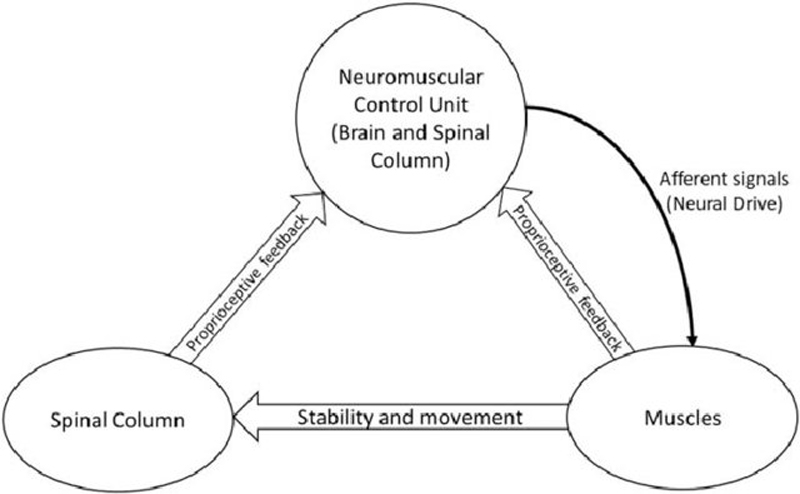Stability: From Biomechanical Concept to Chiropractic Practice
SOURCE: J Can Chiropr Assoc 1999 (Jun); 43 (2): 75–88
Stuart M McGill, PhD
Faculty of Applied Health Sciences,
Department of Kinesiology,
University of Waterloo,
Waterloo, Ontario, Canada N2L 3G1.
This paper formalizes stability in a clinician-friendly way and then discusses ways for chiropractors to ensure stability of spinal joints that may have their stability compromized from manipulation.
KEY WORDS: lumbar stability, chiropractic, exercise, manipulation.
From the FULL TEXT Article:
Introduction
The purpose of this paper is to develop a scientific foundation and formalize the notion of stability as it pertains to the spine, and then discuss some implications of stability for advancing spine rehabilitation and clinical practice. The intention was to write a reader-friendly synthesis where only minimal references were provided. This invited review will complement my last review written for this journal 10 years ago. Over the intervening time we have established the UW-CMCC Chiropractic Research Clinic and have been conducting research with CMCC researchers. While we have been investigating the biomechanical effects of manipulation, we will need to perform additional experiments to provide a synthesis of sufficient utility for chiropractic practice. Look forward to this report in another couple of years.
There are more articles like this @ our:
A major theme developed here pertains to the stability of spinal joints which are directly affected by chiropractic treatment. Can chiropractors be more effective at stabilizing a joint with exercise after they have decreased its stability with manipulation – and if so, how?
On stability: the foundation
Ask ten different clinicians to define stability and chances are there will be ten different responses. Much progress has been made recently on the formulation and operationalization of stability in musculoskeletal linkages and joints. These concepts are now being employed in the clinic and have resulted in enhanced rehabilitation outcome together with more biomechanically justifiable injury prevention strategies. This section shall formalize the notion of stability from a spine perspective.
During the late 1980’s, Anders Bergmark, a professor of solid mechanics at the University of Lund in Sweden, very elegantly formalized stability in a muscular system using a very simplistic model of the spine. [1] With an extremely simplified linkage, and only a few muscles, he was able to formalize mathematically, the concepts of “energy wells”, stiffness, stability and instability. For the most part, this classic work went unrecognized largely because the engineers who understood the mechanics did not have the biological – clinical perspective, while the clinicians were unable to interpret the engineering-mechanics. This pioneering work, together with embellishment by several others will be synthesized here. The following forms a brief tutorial for clinicians to understand the mechanical formulation, and implications of stability for musculoskeletal examples.
Read the rest of this Full Text article now!



Leave A Comment